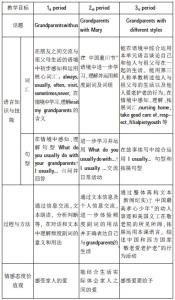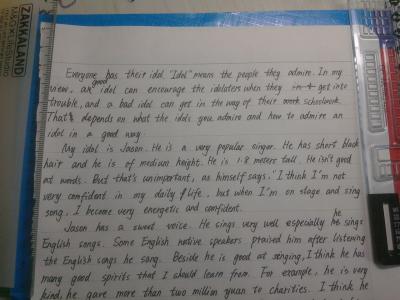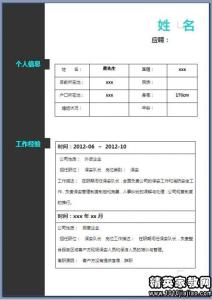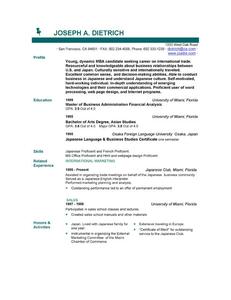有些同学觉得1000字的英语论文难写,可能是因为没有思路,所以小编为大家带来了例文.下面是小编为大家精心挑选的论文,希望能帮到大家!
1000字的英语论文范文篇一
Discuss the Gricean account of the semantics and pragmatics of
conjunctive utterances
Introduction
Semantics studies the meaning and it is concerned with the literal meaning of words and sentences. Semantics focuses on the relationship between signifiers, such as words, phrases, symbols and signs, and what they stand for. While the transmission of meaning doesn’t only depend on the linguistic knowledge (e.g. lexicon, grammar etc.) of the listener and speaker but also depend on the context of the utterance, the inferred intent of the speaker, knowledge about the status of those involved, and so on. (Shaozhong, Liu, 2009) Pragmatics is the study of the contributions of context to meaning, and it encompasses conversational implicature, speech act theory, talk in interaction and other approaches to language behavior in sociology, philosophy, and linguistics. (Mey, Jacob L, 1993)
The semantics and pragmatics of conjunctive utterances
Generally many semantic theories (Russell 1905, Frege 1892, Davidson 1967, Kaplan 1977/89, Segal and Larson 1995) concern truth conditions (Carston, 1999). Grice’s (1967) influential concepts showed in addition to what a speaker says, that is both largely conventional and the content on the basis of which her utterance will be judged true or false, and a speaker may also convey implicatures which don’t affect the truth-value of what she says; so these conversational implicatures are calculated by assuming speakers are being cooperative and adhering to the certain expected standards of informativeness, truthfulness, relevance, and manner of expression (Grice, 1975). That suggests a natural way of drawing the semantics-pragmatics distinction that is semantics will correspond to the truth-conditional content of the
utterance, and the pragmatics to the conveyed meaning which falls outside the truth-conditional content.
So semantic content could be equated with Grice’s what is said, and it has two features. Firstly it is the truth-conditional content of the utterance, and secondly it is determined almost entirely by the encoded, conventional meaning of the linguistic expressions used. And as Grice acknowledged, the truth-conditional content isn’t completely free of contextual input, and in some brief comments on the utterance of “He is in the grip of a vice”, one says, “for a full identification of what the speaker has said, one will need to know (a) the time of utterance, (b) the identity of x, and (c) the meaning, on the particular occasion of utterance, of the phrase in the grip of a vice” (1975/89: 25). But he seemed not to see these processes of reference assignment and disambiguation as requiring appeal to the conversational maxims; instead, the concept seems to be that they are resolved more automatically, and the requisite values being something like objective features of the utterance’s context (Carston, 2002).
A particular division of labor between semantics and pragmatics of Grice (1967) has prevailed in the account of what is communicated by utterances of and-conjunctions. For instance:
a. It’s autumn in New Zealand it is spring in England and.
b. He handed her the scalpel and she made the incision.
c. We spent the day in town and I went to Harrods.
d. She fed him poisoned stew and he died.
e. I left the door open and the cat got in.
“And” is taken to be pretty well semantically empty and it’s taken to be the natural language equivalent of the truth-functional logical conjunction operator. The pragmatics focuses on variety of cause-consequence, temporal and other sorts of relationships understood to hold between the states of affairs which are described, some of that come through in the asymmetrical examples in (1b)-(1e). For example, we all understand the making of the scalpel and the interval of a few seconds to have intervened; and a quite different temporal relation is understood to hold between the states of affairs which are described in (1c), and the event of going to Harrods interpreted as contained within the period of time that is spent in town. The different sorts of consequence relationships are understood in (1d) and (1e): and the feeding of poisoned stew is the sufficient cause for death the leaving open of the door is just one of the range of factors contributing to the cat’s getting in.
These relationships are taken to be derived inferentially via the interaction of the decoded-semantic content with the general knowledge assumptions about the way things connect up and relate in the world, the interaction constrained by some general criterion and criteria of rational communicative behavior.
An interpretation has the two properties as following:
An utterance, on a given interpretation, is optimally relevant:
(a) it achieves enough effects to be worth the hearer’s attention;
(b) it puts the hearer to no gratuitous effort in achieving those effects.
(Wilson and Sperber, forthcoming) Once the listener has accessed an interpretation consistent with the expectation he looks no further but takes this to be the interpretation the speaker intended. The utterance, on a given interpretation is consistent with the presumption of optimal relevance if the speaker can rationally have expected it to be optimally relevant to the
listener on that interpretation. The implications of the definition are fully discussed elsewhere.
As with any utterance there is a range of possible interpretations of (1d) that are compatible with the linguistically encoded, semantic and content. Two of the logical possibilities for (1d) are as following:
a. She fed him poisoned stew and as a result he died shortly after.
b. She fed him poisoned stew and he died years later in a car crash.
Though these are both possible and consistent, the first sentence is absolutely more likely to be recovered by the listener, and to have been intended by the speaker, than the second sentence. That’s because everyone knows that poison can cause the death and that one who knowingly feeds someone poison is most likely doing that with the intention of killing the person. And the relevance-theoretic pragmatic account captures the intuitions without seting up any special principles telling listeners to interpret in accordance with their standard stereotypic assumptions.
Conclusion
The current state of the debate relating the interface between semantics and pragmatics is the upshot of the revolutionary period in the research of meaning known as radical pragmatics and aided by the views of ordinary language philosophers. The two relatively separate disciplines, the formal research of sentence meaning and the relatively informal research of the properties of speech acts became more and more intertwined as a result of the adoption of the semantic underdetermination and the admittance of the pragmatic inference about the speaker’s intentions, as well as other contextbound informations, into the semantic content. That facilitated the shift of the centre of attention from the sentence to the utterance. But the direction of change hasn’t been steady throughout the past three decades. Attempts keep semantics and pragmatics apart either through denying that semantics has to provide the propositions and hence truth-conditional content, or through keeping the objectives of the semantics and pragmatics apart and stressing the theoretical utility of the sentence’s truth conditions, just like minimalists of the syncretic flavour do. And the dominant orientations are however various forms of contextualism. The state of affairs is undoubtedly aided by the overall desideratum to stay faithful to the speakers’ intuitions about meaning and to the view that the aim of the semantic theory is to cater for these intuitions. Whether contextualism will retain its power, succumb to the minimalism, or evolve into the radical form of occasion-meaning of the meaning eliminativism remains to be seen.
References
Carston, R. 1999. The semantic-pragmatics distinction: A view from relevance theory. In The Semantics/Pragmatics Interface from Different Points of View (CRiSPI 1), ed. K. Turner, 85-125. Oxford: Elsevier.
Davidson, D. 1967. Truth and meaning. Synthese 17: 304-323. von Fintel, K. and Gillies, A. 2011. Might made right. In Epistemic Modality, eds. A. Egan and B. Weatherson, 108-130. Oxford: Oxford University Press.
Frege, G. 1892. Über Sinn und Bedeutung. Zeitschrift für Philosophie und Philosophische Kritik 100: 25-50.
Grice, H. P. 1975/1989. Logic and conversation. In Syntax and Semantics 3: Speech Acts, eds. P. Cole and J. Morgan, 41-58. New York: Academic Press; reprinted in Grice, H. P. 1989, 22-40.
Grice, H. P. 1989. Studies in the Way of Words. Cambridge, MA: Harvard University Press.
Kaplan, D. 1977/89. Demonstratives. In Themes from Kaplan, eds. J. Almog, J. Perry and H. Wettstein, 481-563. Oxford: Oxford University Press.
Larson, R. and Segal, G. 1995. Knowledge of Meaning: An Introduction to Semantic Theory. Cambridge, MA: MIT Press.
Mey, Jacob L. (1993) Pragmatics: An Introduction. Oxford: Blackwell (2nd ed. 2001). Shaozhong, Liu. (2009) “What is pragmatics?” http://www.gxnu.edu.cn
1000字的英语论文范文篇二
Abstract (in English)…………………………………………………………………..1
Abstract (in Chinese) ………………………………………………………………….1
Ⅰ Introduction………………………………………………………………………...1
1.1Multi-Media With Erroneous Zones………………………………………………1
1.1.1 Erroneous Zone 1……………………………………………………………2
1.1.2 Erroneous Zone 2……………………………………………………………2
1.1.3 Erroneous Zone 3……………………………………………………………2
1.1.4 Erroneous Zone 4……………………………………………………………3 ⅡCountermeasures………………………………………………………………….3
2.1 Unsuitable Operation ……………………………………………………………4
2.2 Over stimulation In Courseware…………………………………………………4
2.3 Vague Content with Automatical Transformation…………………………………5
2.4 Neglect Of Teachers’ Function……………………………………………………5
ⅢConclusion…………………………………………………………………………..6
3.1 Prospect in English Teaching……………………………………………………...6
3.2 Personal Opinions of Further Research……………………………………………6
BIBLIOGRAPHY…………………………………………………………………….7
Discussion on the Application of Multi-media
In English Teaching
(字体:Times New
Abstract: With the rapid development of computer and popularization of the network, the present teaching pattern that still uses traditional teaching method “one chalk, one blackboard” seems to be unable to meet the requirements in the present society any longer, and English teaching is no exception. The introduction of the multi-media teaching method to the English class has been one of the tendencies to the development of English teaching. But the misuse of the modern tools will surely result in the bad effect to English teaching. So English teachers should take an active part in the research of how to use the multi-media teaching method in English teaching and try to avoid its misuses.
Key words: multi-media; English teaching; overcome
(英文摘要和关键词都是两边对齐;5号字;行距:单倍; 字体:Times New Roman;
“Abstract” 和 “Key words” 两个词或词组要加粗)
(关键词之间用分号隔开;词与词之间相隔一个英文字符)
(空一行)
摘要:随着电脑和网络的迅速发展,那种“一盒粉笔,一块黑板”的传统教学模式的应用已远远不能满足现代社会对教学的需要。英语教学也不例外。怎样将多媒体运用于英语教学已成为教育趋势,但是一旦错误使用多媒体英语教学,将导致教学障碍从而给英语教学带来负面效果。英语教学者应当积极从事研究与克服多媒体英语教学的弊端。(300字以内) 关键词:多媒体;英语教学;克服
(英文摘要和关键词都是两边对齐;5号字;行距:单倍; 字体:楷体;“摘要”和“关键
词”两个词或词组要加粗)
(关键词之间用分号隔开) Roman;小3号字;居中;加粗)
(空一行)
І Introduction (一级标题4号字;字体:Times New Roman;加粗) (以下正文均为:小4号字;字体:Times New Roman;行距:1.5倍)
The application of multi-media in English teaching has broken the traditional
teaching pattern “one chalk, one blackboard”. It processes the words, images, voice and animation and other information by the computer and forms an all-around teaching system. It is not only a good medicine to the Chinese student with their mute English but also benefit to the improvement of students’ language ability and students’ subjective initiative shall be fully developed. It can improve teaching efficiency and teaching quality effectively.
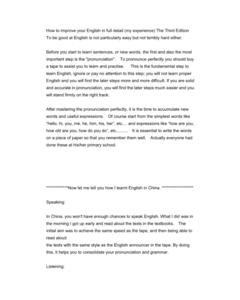
1.1 Erroneous Zones in the Use of Multi-Media
(二级标题小4号;字体:Times New Roman;加粗)
Multi-media teaching is a brand news teaching model and poses a new challenge to teachers. If it is used improperly or used with erroneous zones in rational knowledge, it can bring much bad effect to the teaching.
1.1.1 The use of the multi-media as the leading teaching methods (与二级标题相同;加粗)
There are many outstanding strong points in multi-media teaching comparing with the traditional teaching. But it is not valid everywhere. It has both advantages and disadvantages. Some teachers cannot see the advantages and disadvantages of the multi-media in their teaching and cannot exploit to the fully the multi-media’s favorable conditions and avoid unfavorable ones. They cannot use the multi-media and ignore the function of teacher. The multi-media teaching programs of theirs are only the accumulation of letters, images, and the contents of books, just like a refurbished version of the book. There is no innovation in their class. They just show the multi-media teaching program in their English class and teacher just like a projectionist. Teacher become the slave of the multi-media and cannot be as the leading teaching main subject.
1.1.2 The change of the “Teacher Teaching” into “Machine Teaching” and the ignorance of the main teaching status of students
The multi-media teaching encourages students to combine speaking and practice and to strengthen the memory. But some teachers consider that advanced teaching methods must bring the advanced teaching ideas. Some teachers use the
multi-media as the teaching tools. Teacher still acts as the center of the teaching and students are still the passive accepter. Force-feed type educates still give full play to their remarkable skill (Bernard, 1995;210). (夹注方法:1. 写出作者的姓名(英语学者用last name,中国学者用其姓名的全称)加逗号;2. 作品出版时间加分号;
3. 参考作品的页码) (夹注内容应放在应放在标点符号之前)
1.1.3 The replacement of the Student-to-Teacher with Student-to-Machine.
There is a very friendly interface in the multi-media teaching program. Students can choose different study content according to their own practical study standard and their own interests. But this does not mean that teacher can give up. Teaching is a mutual activity to both teacher and students. Teacher and students can communicate with each other by talk, information commutation and feedback to implement teaching plan and accomplish teaching target (Christopher, 1986: 46). If the multi-media is used blindly in teaching processing, only think a lot of student-to-machine talk and ignore the student-to-teacher communication, the relation between the student and teacher will become dim as time passes. Further more, the relation between the student and teacher will become dim as time passes. Further more, the multi-media will be cold reception by students. The enchantment of the class does not exist any more and the teaching effect is seriously influenced. How we can make the best use of the multi-media teaching program and how to improve our teaching effect is left to every teacher.
1.1.4 The misunderstanding of multi-media method
Some teachers pursue the newest high technology and braveness simply, make the teaching program to the achievement exhibition of the multi-media teaching and cannot use the multi-media to put the axe in the helve that cannot be solved in the traditional teaching. They do not look the multi-media as the assistant teaching tool. They make the multi-media teaching program very beautiful and flaming, but this just detracts students’ attention and bothers students’ observation. We must know that the multi-media assistant teaching is not only the art, but also the science. As the assistant English teaching software, solving the problems met in English teaching should be the
primary. We should look the actual effect of the software, not emphasis on the eyewash.
Ⅱ Countermeasures (一级标题4号字;字体:Times New Roman;加粗)
The countermeasures are the measures and the remedies which the educators can take measures to correct the misunderstandings or misusing of multi-media English teaching.
2.1 (二级标题小4号;字体:Times New Roman;加粗)
Take the man as the primary and adopt the advantages of the multi-media. When we make the multi-media teaching program, we must know that it is only and can be only the assistant teaching tool for our teaching. Students and teacher should be always the primary. Teacher is the leading and students are the principal part. With the interposition of multi-media, teacher is less participated in the class and students are more active in the class. But this does not mean that teacher is not the leading any longer, Teacher is always the designer of the class, exponential of the study and the organizer of the class. The teaching art is improved. Teacher should pay more attention to giving students advices. Further more, teacher should set up his own teaching style in his multi-media teaching program to make his lessons more vivid and vigorous. Every teacher must not be controlled by the multi-media. The multi-media teaching program is not the repeat of the hook, not the relish of the lessons, it is the re-creation which can meet the requirement of teaching contents and students' practical cites by teacher.
2.2 Pay attention to actual effect and be intent on nothing but usefulness. Although computer has the function of multi-media and super-media, it can only be a media in teaching program. Some teachers take it as all-media. They cannot look the multi-media computer all round from the sides of media. They use computer to complete every thing they can do. The blackboard is only the ornament within their vision and computer becomes another book to students. As we all know, the function of the multi-media does not always work. We must think over when, where and how
the multi-media should be used in teaching. You are to be sure to keep in mind that multi-media cannot be misapplied anywhere. It should serve the teaching. The multi-media teaching program is bad or good should be reflected by its teaching
result. When we use multi-media, we must proceed from actual conditions and pay attention to actual effect. Teaching mistake will be made if you follow the fashion of applying multi-media everywhere. Once a teacher applied multi-media in his teaching for only five minutes but all the other teachers attend the lesson felt that was the most successful multi-media lesson they had ever attended. Thus it can be seen that the use of the multi-media is one not of quantity but of quality. Moreover, when we use multi-media as the teaching tool, we should also study intensively the teaching materials and have a definite object in view. None but in this way can the application of the multi-media in teaching make the finishing point.
2.3 Center on the teaching material and grasp the main point. To gain the teaching goal, the percept can be presented to students visually with the usage of multi-media and students are impressed by the voice, image or color to set aroused students' interests in studying, make them concentrate on the class more carefully, more steadily and more actively(Gary G Bitter, 1989: 229). But in many practical classes, some multi-media teaching program departures the teaching goal more or less because teacher ignores the careful research on the teaching goal and teaching material. As an example, some English multi-media teaching programs use a lot of phonotype, videotape, pictures, images, some editing and rearrangement of historical film or people dialogue to introduce the background of the text, which makes students understand the lesson more difficultly and can not learn knowledge better. We must know, sometimes, it is very necessary for us to use media to help us in teaching, but if we cannot use multi-media in a good time and use too much media information in our class, the teaching goal will be dim to students. It is necessary to adopt multi-media properly in teaching, but going too far is as bad as not going far enough. When the multi-media bring into play its roll, we must think over the best time and best method we use it so that we can help students solve problems. Remember that you mustn't a
presumptuous guest usurps the host's role.
2.4 Grasp the rhythm of the multi-media and seize the opportunity to use the multi-media. More knowledge is brought to the class because of the application of multi-media in teaching. If teacher cannot grasp the rhythm very well, teaching process will be quicker easily. Students cannot grasp the knowledge well. Time passing by, the study enthusiasm of students' may be reduced. So grasp the rhythm of the multi-media in English teaching is very important. Teacher should give students enough time to think over the teaching content. If heaps of knowledge were tipped to students and there is not enough time to digest, students will be busy reading and ignore the teaching of teacher's. You should remember that students are always the principal part in teaching (Retailer, 1980: 109). If there is not enough communication with eyes and mouths between teacher and students, students will lose the interest of study very easily. Much time is saved when we use multi-media to help our teaching, so teacher must try his best to enlighten, suggest, communicate and enliven the atmosphere of the class, which may encourage students to study and improve teaching efficiency.
Ⅲ Conclusion (一级标题4号字;字体:Times New Roman;加粗)
3.1 Prospect in English Teaching (二级标题小4号;字体:Times New Roman;加粗)
All in all, multi-media teaching is a great reform and development of the traditional teaching. Although the advantages of English teaching assisted with multi-media have been confirmed and advocated by both teacher and students, yet we cannot negate its negative side. Even in some parts of our country, certain middle schools want to win the competition of “High Quality Class” only by using multi-media technique. Why we apply the multi-media to the English teaching? Because our target of English teaching is to establish effective system of ETL.
3.2 Personal Opinions of Further Research(二级标题小4号;字体:Times New Roman;加粗)
Further more, we couldn’t simply regard this problem as the mutual
incorrectness between right or wrong. The key to the problem is continue transforming the attitude,the angle, the role, the method between traditional English teaching and the modern one. All teachers shall make joint efforts to take certain countermeasures to the various problems occurring during multi-media English teaching, in order to promote teaching reform, improve teaching quality, develop the language ability of students.
For this essay, the author would like to share the discussion and opinions with every English educators who always pay attention to the problem. More achievements will be succeeded by getting down to the real practice. Thank you for correcting my improperness in this essay and expressing your thought.
(空一行)
BIBLIOGRAPHY (全部大写;字体Times New Roman, 小4号字;加
粗)
(以下字体小4号;字体Times New Roman;行距:1.5倍)
Bernard, J. Poole. (1995). Education for an In formation Age. C. Brown
Communications, Inc.(换行的词首右缩4个英文字符)
Christopher, N. Candlin. (1986). Computers in English Language Teaching and
Research. Longman Inc, New York.
Gary, G. Bitter. (1989). Microcomputers In Education Today. Mitchell publishing,
Inc.
Handler, Diced. (1983). Exploring English with Microcomputers. London:
Educational Technology
Leech, G. N. and Beale. (1984). Language Teaching. UCREL.
Robert, Taylor. (1980) The Computer In the School: Tutor, Tool, Tutee. Columbia
University Press.
何克抗. 信息技术与课程整合[J]. http://www.etc.edu.cn.:教育技术通讯,2003(2). 郑夫扬. 恰当应用多媒体,提高课堂教学效率[J],江苏:教育与现代化,2001(3). (换行的词首右缩2个中文字符)
DECLARATION
(以上字体Times New Roman, 小3号;加粗)
(以下字体小4号;字体Times New Roman;行距:1.5倍)
LiYang , the undersigned, hereby declare that this thesis does not contain any material which has been accepted for the award of any other higher degree or graduate diploma in any tertiary institution and that, to the best of my knowledge and belief, this thesis does not contain any material previously published or written by another person, except when due reference is made in the text of the thesis.
Signed:
Dated:
贵州师范大学本科毕业论文(设计)开题报告
学院:外国语学院 专业:英语 级别:2003级(1)班
 爱华网
爱华网
